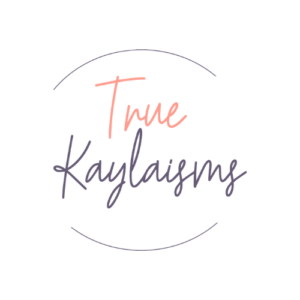
If you own a small business and want to get people through the door, it’s a no brainer that you will need to invest in a little bit of marketing.
Sure, small businesses might not have the budgets that large corporations do, but according to the U.S. Small Business Administration, you should be spending 7 to 8 percent of your gross revenue on marketing and advertising.
So, where do you even start and how can you get the most bang for your buck when it comes to marketing? Don’t worry, I’m here to help.
I thought we could celebrate “National Small Business Week” with a few tips and tactics that all small businesses should be using in their marketing strategy. Look at is as a “Small Business Marketing Starter Kit.”
1. SOCIAL MEDIA MARKETING: MEET YOUR CUSTOMERS ONLINE
When I say social media marketing, I don’t mean put out a few posts on Facebook and call it a day’s work. Yes, having any type of presence will help slightly with your SEO, but creating a strategy around your posting will not only help with engagement but help build a stronger relationship with your audience and drive more traffic to your website.
Believe me, there is a strategy behind what time you post, what type of content you post and on what platform you use. And with social media algorithms hiding so much content, you want to make sure that your business remains strategic. Especially because 70 percent of business-to-consumer marketers have acquired customers through Facebook.
If you’re not doing so already, increase your spending on social media marketing and advertising. It’s a cost-efficient way to reach and connect with your current and new customers, control your message, and advertise upcoming sales and promotions you have at your store.
2. EMAIL MARKETING: CONTINUE THE CONVERSATION
Email marketing is effective and should be a part of your marketing strategy. Today, email is almost 40 times more effective than Facebook and Twitter combined in helping your business acquire new customers, and 91 percent of US adults actually enjoy receiving promotional emails from companies they follow.
I look at email marketing as a tool to continue the conversation after someone has signed up for your good or service. Maybe you had a nice conversation online or in your physical store, why stop there?
Newsletters and updates are a great way to keep your loyal customers informed on what is happening with your business, but email can also be used as a part of your strategy to boost sales.
Use Email To Convert Customers
Email marketing is a great tool to get users to convert, if they haven’t already. Say you put out a Facebook ad, were able to get a user’s email, but they still haven’t purchased your service. Well, this is where drip email campaigns come to play.
By setting up a series of emails, you can continue to tell your company’s story, all while reminding and convincing your prospects to take action.
Plus, email gives you the opportunity to get a little more personal, build excitement, and lets you analyze real-time results.
3. COMMUNITY OUTREACH: SPREAD THE WORD
Public Relations and working with the media can seem intimidating, but there is a reason why they call it “local news” – they cover everything local. Not to mention, the media loves small business because it creates more of a humanity narrative rather than the big corporate monster seeking the story.
You don’t have to have a large budget for PR if you’re smart about what stories you want to pitch to gain a little extra attention. Maybe you have a big opening or expansion happening, a volunteer story, or could be an industry expert for a story your local news has been chatting about. Regardless of your current story, there can always be an angle to pitch to the press.
Also, remember, PR isn’t just the media, it’s other website coverage, too. No, an influencer sharing a sponsored post isn’t what I’m talking about here but actually getting coverage on a blog that adheres to your audience.
A good PR strategy takes time, but if you invest in one, you might be surprised the level of trust you can build with your community and, in turn, notice in an increase in traffic to your business.
4. BLOGGING: DRIVE TRAFFIC TO YOUR WEBSITE
Setting up a website is imperative to not only demonstrate you’re a legit company but to share your story with your customers. Yes, good content on your site is crucial for SEO and branding purposes, however, think about taking it a step further.
Businesses that have incorporated a blog into their strategy saw an increase of 55 percent to their site than businesses without blogs.
Having a company blog is a great way to update customers on happenings at your business, tips and tricks in your service industry, and is a great tool to be able to control your message. If you blog consistently enough, the more traffic that will come to your site.
Although blogging is a great tool to increase traffic, you might not see as high of an increase if you’re not being strategic. Remember to put some thought into your content, create breaks throughout the sea of words, incorporate photos, do research on what blog headlines perform well, and make sure that your content is relevant.
—
Each of these different areas deserves a blog post within itself, but I hope that as a small business owner, they got your wheels turning.
If you’re already doing some of these tactics, give yourself a pat on the back, but I also encourage you to think about if you’re spending enough resources or money in some of the other buckets listed.
And as always, (insert shameless plug here) I’m available to help with any of your small business marketing needs. Check out my website for more information and get started today!






